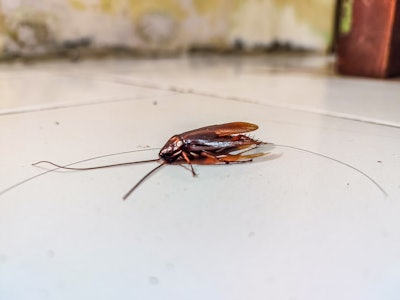
Children who have asthma and are exposed to floor cockroach and mouse airborne allergens are more likely to be predisposed to upper respiratory infections (URIs). According to authors of the new study, “Indoor Allergen Exposure and its Association to Upper Respiratory Infections and Pulmonary Outcomes Among Children With Asthma,” certain environmental allergens are more common in disadvantaged communities.
The study, which was published in The Journal of Allergy and Clinical Immunology, revealed that sensitizations among children with asthma included cockroaches in 56% of participants and mice in 59% of participants. However, exposure to cat allergens appeared to have a protective effect, according to researcher Darlene Bhavnani, PhD, MPH, an infectious disease epidemiologist and assistant professor in the department of population health at the University of Texas at Austin Dell Medical School.
 Darlene Bhavnani, PhD, MPH
Darlene Bhavnani, PhD, MPH
Minoritized populations are often subject to poor living conditions such as pest exposure in their neighborhoods and homes, she said.
The randomized clinical trial used data from the Environmental Control as Add-on Therapy for Childhood Asthma study, including 90 children aged 5 to 17 years with persistent asthma (median age, 9.5 years; 60% boys; 92% Black; 92% with public health insurance).
In addition to cockroach and mouse allergens, sensitizations among the study cohort included cat (39%), dog (36%) and dust mite (35%), with 69% sensitized to two or more allergens. All children had prescriptions for controller medications for their asthma, but none were using immunotherapy or biologics.
Twenty-seven percent of participant observations indicated at least one respiratory virus in nasal mucus samples, including 33 (63%) positive for rhinovirus and 10 (19%) positive for respiratory syncytial virus. Also, (35%) included common cold symptoms.
Among patients with a URI and cold symptoms, nine of 14 had fractional exhaled nitric oxide levels of 20 ppb or higher. Additionally, 29 of 190 observations (15%) included cold symptoms and 18 of 29 (62%) had a URI, both on average.
“Among children with asthma, exposure to cockroach and mouse allergens were positively associated with having a symptomatic viral infection,” Dr. Bhavnani said. “It was interesting that stronger associations were observed for children who had positive allergy tests to cockroach and mouse allergens.”
There were no associations between cat or dog allergens in floor dust and increased odds for outcomes associated with URIs. In fact, researchers said that there were negative associations between cat allergen concentrations and some outcomes.
“We did observe a negative association between cat and mouse allergen in homes suggesting that cats may keep mouse populations low,” Dr. Bhavnani said. “However, a cat allergy was very common among those with a mouse allergy, so owning a cat to keep mouse populations low may not be a viable strategy overall.”
Based on these findings, researchers said there were associations between allergen concentrations and increased risk for infection, common cold symptoms and lower respiratory tract effects among children with asthma.
Environmental protections that reduce exposures to mouse and cockroach as well as biologic therapies may decrease risks for virus-associated morbidity among these children, researchers said.
“Physicians caring for minoritized children with asthma can help to advocate for healthy homes and healthy neighborhoods,” Dr. Bhavnani said. “Living in homes where pest infestations are not a problem may help to decrease the risk of viral-associated morbidity among children with asthma.”






















